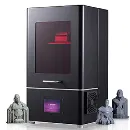
- Support WiFi, USB, Ethernet connectivity for data transfer
- Real-time monitoring with IPS touch screen display
- Single linear rail to reduce wobbling

- Z-axis dual linear resin with high precision
- Integrated tempered glass 3D printer
- Air filtration technology to remove bad odour

- Automatic levelling and fast slicing software
- Wifi remote control system for large printings
- Perfect 3D printer for Multi-industrial applications
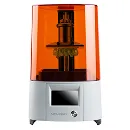
- Durable, shatterproof and Anti-UV cover protection design
- Permanent levelling design printer with the smart cooling system
- Wide applications of architectural, and jewellery modes

- Air circulation system for odor free printing
- Rapid prototyping printer for massive printing size
- Self-developed slice software for fast 100M slicing files

- Smart-support with Auto-generation system
- LCD stereolithography printing technology
- Easy to operate with full touch screen display
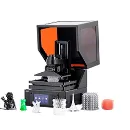
- Built-in web user-interface for architecture printings
- High-resolution 3D printing with an auto-levelling build plate system
- Removable Magnetic Build surface for hassle-free cleaning
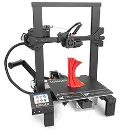
- Unique tempered glass design on the heated bed
- Automatically suspends printing when filaments run out
- Automatically suspends printing when filaments run out
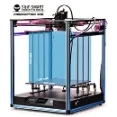
- 2k HD mask 3D printer LCD display
- CE, FCC and PSE certified power adaptor
- CNC aluminium build plate with large resin vat
"Amazon, Amazon Prime, the Amazon logo and Amazon Prime logo are trademarks of Amazon.com, Inc. or its affiliates". AS AN AMAZON ASSOCIATE, WE EARN AFFILIATE COMMISSIONS FROM QUALIFYING PURCHASES.
Quick Summary
🏆 Best Overall: Phrozen Lite - Higher Printing Stability... | ⭐ Runner Up: Qidi Tech 3D Printer 5.5 - Integrated Wi... | 💰 Also Great: WiibooxSweetin UV - Stability Printings...
What Is A Resin 3D Printers & How To Select A Perfect One To Use?
From small daily tasks to big projects, everything starts from a basic print. We have come a long way from traditional printers and the black and white era. Today, we have advanced technology that focuses on making the copy more accurate with 3D Printers for copying. There is a whole variety of printers, and choosing from them can be a task. You may be baffled, and don't know which printer to buy. Do not worry! By the end of this article, you will know about the types of printers and the technology they use.
What is a 3D Resin Printer?
Resin 3D printers are used to create a small physical structure of an idea or model of a thing. Users can see and experience the shape of things physically by touching them. It is quite different from the prints we take on normal papers. Some of the best 3D printers have special features like wi-fi 3D printers.
3D Resin Printer works on two different technologies and is Stereolithography and Digital Light Processing. Stereolithography is one of the old forms of 3D printing and is most widely used. Digital Light Processing is introduced in 1987. These printers are used for making models, prototypes, patterns and different production parts layer by layer. These products also support the touch screen option which is similar to touchscreen 3D printers.
Things To Consider While Buying The Resin 3D Printers
Resolution
There are three dimensions, X, Y and Z. The vertical dimension, Z makes 3D printing possible. The ability of a printer to produce thick layers is known as Z Resolution. SLA and DLP 3D printers have the finest Z resolution.
Accuracy
Accuracy is an essential factor here because this is a layered process. Inaccuracy can arise at any step. There are many factors like materials used, software settings, etc. that are responsible for accuracy. SLA and DLP 3D printers are incredibly accurate and precise. Before buying the printer, you can ask for a sample of the 3D model to check its accuracy.
Smoothness And Finishing Of The Model
SLA and DLP create smooth models and give them a beautiful finishing. Since the models are designed with layering, horizontal and vertical lines are sometimes visible. Compared to the other printers, this Qidi 3D printer provides a relatively higher rate of smoothness and precision.
Speed Of The Printers
Speed is an important aspect when it comes to printers. The speed of print in DLP 3D printers depends on the height of the model. The speed is uniform. They print full and denser models fast that fill up most of the platform or surface. Phrozen Lite printers can print small and medium-sized parts faster. SLA provides a larger build volume.
Different Types Of Resins
● Standard Resin: It is a low budget resin that provides highly detailed parts.
● Gray Resin: It is a smooth resin and is easy to paint on. It offers nine different colours for finishing.
● Mammoth Resin: You can print enormous sizes with smoothness and accuracy.
● Transparent Resin: It offers a transparent surface and is mainly used for smaller models.
● High detail Resin: It uses Polyjet technology. It can make small models with high accuracy and precision.
Resin 3D Printers
Frequently Asked Questions
1. What is a liquid resin 3D printer?
Exposing a layer of photosensitive liquid resin to a UV-laser beam is called stereolithography (SLA) Printing and this type of process printer is called liquid resin 3D printer.


